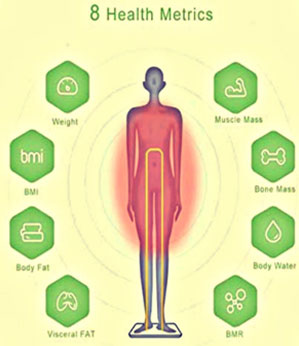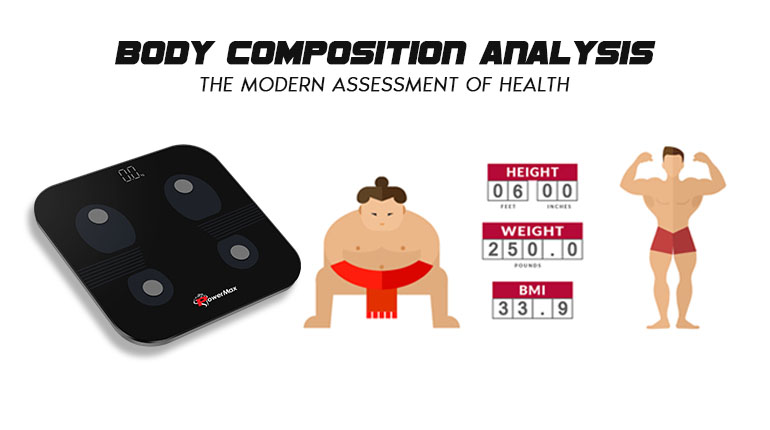 When you're considering to get thinner or just wanting to perceive how healthy you will be, you most likely do one of these two things: either step on a scale or compute your BMI.
When you're considering to get thinner or just wanting to perceive how healthy you will be, you most likely do one of these two things: either step on a scale or compute your BMI.
However, to be honest, these techniques don't disclose to you anything about how healthy you are–all weight and BMI do, is contrast how heavy you are in accordance with a standard that doesn't really incorporate your individual objectives.
It’s believed that having as meager fat as possible is equivalent to 'being fit'. However, this is entirely incorrect as being thin doesn't consequently decrease one's health hazards. Being thin just implies weighing lower than the recommended standards in age-height-weight tables.
Leanness, however, refers to the muscle, bone, and fat composition of one's body weight. Being lean inherently shows more prominent muscle mass advancement than being thin.
What does Body composition mean?
Body composition is a technique for portraying what the body is made of. It incorporates fat, protein, minerals and body water. It additionally depicts weight more precisely than BMI. Body composition analysis can precisely show changes in fat mass, muscle bulk, and muscle versus fat ratio.
 Why is it so important?
Why is it so important?
Body composition and development are the key essentials of depicting wellbeing in a population.
The continuous pestilence of obesity in kids and grown-ups has all the more increased the significance of understanding muscle to fat ratio levels in order to assess current and long-term health.
Furthermore, different segments of body composition additionally impact wellbeing results, and its estimation is progressively profitable in clinical practice.
Why to differentiate between muscle and fat?
It has been widely proven that too much fat imposes a serious health risk. Ailments including hypertension, hyperlipidemia (raised fats and cholesterol), diabetes mellitus, cardiovascular diseases, respiratory dysfunction, gallbladder issues, and a myriad of other health problems are all found to be associated with obesity.
 BMI is not an option anymore!
BMI is not an option anymore!
Body Mass Index (BMI) is a typical technique used to evaluate the health of a person by looking at the measure of the weight they convey to the stature of the person. In its most essential sense, BMI might be valuable for recognizing the individuals who are at a higher risk because of the abundance of body fat.
In spite of the far-reaching utilization of BMI in clinical practice, it has numerous impediments and is a poor following device for weight change due to the fact that there's no real way to recognize if changes in your weight are in fat or muscle.
That is on the grounds that BMI is determined essentially by isolating an individual's weight in kilograms by their height: BMI formula = kg/m2. Anticipating health or mortality utilizing a solitary number, for example, BMI misrepresents health risks and disregards significant components that add to positive health.
Differing from direct weight measurement or Body Mass Index (BMI), body composition analysis takes into consideration the level of fat mass and fat-free mass in order to check whether an individual ought to be classified as underweight, normal weight, overweight or obese.
What to do then?
Designed for the ones who're adamant enough to get a realistic picture of their health and fitness, a body composition analyser provides in-depth assessment of not just the weight, but also other key measurements that can stupendously aid an individual in proper evaluation and management of weight in the most balanced, effective and scientific way possible.
It involves the concept of Bio-impedance which is an excellent method used by household scales to calculate body composition. Bioelectrical Impedance Analysis (BIA) is a way of measuring impedance by applying alternating electrical currents (low-level) in order to measure the volume of water through impedance values. This non-invasive method assists in estimating body water from which body fat and other key compositions are calculated using selected equations.
Some extremely crucial compositions that could be assessed using a body composition analyzer are as mentioned below:

- Muscle mass: Weight of muscle present in the body.
- BMI: Body fat based on the ratio of height to weight
- Weight: Overall body mass.
- Bone mass: Weight of bone minerals in the body
- Body fat: The actual weight of fat in your body.
- Visceral fat: Fat surrounding the organs or viscera.
- Subcutaneous Fat: Loose fat visible just under the skin.
- Water: The overall percentage of fluid in the body
- Basal Metabolic Rate: The minimum amount of energy needed for the proper functioning of the body at rest.
- Protein content
- Metabolic age: comparison between an individual's basal metabolic rate (BMR) against the average BMR for an age.
A body composition analyzer helps in getting to know your body better by providing precise measurements via a series of complex advanced algorithms and the excellent concept of Bioelectric Impedance Analysis.
All in all, this is by far the most modern, realistic and user-friendly way of keeping a check on your health. Don't miss the opportunity to get your hands on an affordable, sleek and trustworthy Body composition analyzer.
Happy fitness to you!
To get one for you, visit
https://www.powermaxfitness.net/accessories-c-3.html
 India (INR)
India (INR)
 UAE (AED)
UAE (AED)
 Store Locator
Store Locator



 When you're considering to get thinner or just wanting to perceive how healthy you will be, you most likely do one of these two things: either step on a scale or compute your BMI.
When you're considering to get thinner or just wanting to perceive how healthy you will be, you most likely do one of these two things: either step on a scale or compute your BMI. Why is it so important?
Why is it so important? BMI is not an option anymore!
BMI is not an option anymore!
-thumb.jpg)
-thumb.jpg)
-thumb.jpg)
-thumb.jpg)
-thumb.jpg)
-thumb.jpg)
-thumb.jpg)
-thumb.jpg)
-thumb.jpg)
-thumb.jpg)